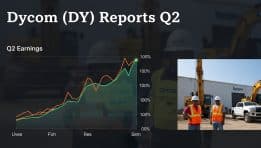Impact of Potential Russia-Ukraine Peace Talks on Global Oil Prices
As the world closely watches the situation between Russia and Ukraine, the possibility of peace talks is stirring discussions about their impact on global oil prices. Both nations are major players in the energy market, so any changes in their relationship can significantly affect prices worldwide. Historically, rising tensions lead to price spikes due to fears of supply disruptions, while steps toward peace generally push prices lower as stability seems more likely.
Understanding how peace talks could influence oil prices involves several key factors:
-
Demand and Supply Dynamics: Oil prices depend heavily on supply and demand. If peace talks succeed, concerns about supply disruptions may ease, reducing prices. Conversely, continued conflict could keep prices high due to persistent supply fears.
-
Market Sentiment: Oil markets are strongly influenced by sentiment. Positive news about peace negotiations often drives optimistic behavior, leading traders to anticipate stability, which can push prices downward.
-
Geopolitical Risks: Oil prices are highly sensitive to geopolitical events. Successful peace talks could build investor confidence and stabilize markets, usually leading to lower prices.
-
Production Levels in Russia: As one of the world’s top oil producers, any resolution could increase Russian oil exports, boosting global supply and putting downward pressure on prices.
-
Influence of OPEC: If Russian output rises after peace talks, OPEC may need to adjust production policies to stabilize prices.
While peace talks may cause short-term volatility, the long-term effects are critical for both investors and consumers. Changes in oil prices ripple through global economies, influencing inflation, transportation costs, and economic stability.
The possibility of peace also affects energy security, particularly in Europe, which relies heavily on Russian oil and gas. Successful negotiations could reduce the urgency of shifting to alternative energy sources, potentially slowing renewable energy investments in the short term.
However, if peace talks fail or progress stalls, oil prices could spike suddenly as speculators react to renewed instability. This ongoing volatility keeps consumers, corporations, and governments highly alert to developments.
In the bigger picture, global oil consumption will continue to be shaped by geopolitical relationships. A stable resolution could foster lower prices, while renewed tensions could trigger sharp increases, continuing the familiar cycle of oil market highs and lows.
Current Trends in Oil Market Volatility and Investor Sentiment
The oil market has experienced significant volatility in recent months, leaving investors uncertain about their strategies. Geopolitical tensions, particularly in major oil-producing regions like Russia and Ukraine, add unpredictability and complicate market sentiment.
Another notable trend is the transition toward renewable energy. Governments worldwide are setting ambitious carbon reduction targets, prompting investors to reconsider their exposure to oil assets. This shift could signal a long-term decline in oil demand, impacting prices and market stability.
Key factors influencing oil prices and investor sentiment include:
-
Geopolitical Events: Conflicts or tensions in oil-producing regions can trigger sudden price shocks.
-
Supply and Demand Dynamics: Post-pandemic economic recovery has increased energy demand, sometimes clashing with production limits. OPEC plays a critical role in balancing these dynamics.
-
Economic Indicators: Metrics such as GDP growth, employment rates, and inflation strongly influence oil demand expectations.
-
Technological Advances: Innovations like fracking and offshore drilling can increase supply, challenging price stability.
-
Natural Disasters: Hurricanes, earthquakes, or other disasters can disrupt production and refining, causing supply shortages and price spikes.
Investor sentiment is also shaped by regulations promoting sustainable practices, which encourage alternative energy and impose stricter emissions standards on fossil fuel companies. This evolving regulatory environment makes oil investment riskier and more complex.
Additionally, the psychological impact of news cycles, social media trends, and public perception plays a significant role in market volatility. Staying informed about these shifts is essential for navigating the market effectively.
Despite uncertainties, some analysts remain optimistic about oil’s future. Investments in infrastructure and technology could help meet future demand. Peace talks between Russia and Ukraine, if successful, could stabilize supply chains and ease price volatility.
Conclusion
The Russia-Ukraine situation remains a key driver of global oil prices. Progress in peace talks tends to generate cautious optimism and could stabilize supply and reduce uncertainty, lowering prices. Conversely, setbacks or delays in negotiations can perpetuate volatility and keep investors on edge.
Investor sentiment remains highly sensitive to geopolitical developments, and sharp price swings often reflect these shifts. For stakeholders in the oil market, closely monitoring these developments is essential to managing risks and adjusting strategies effectively.
Comparison, examination, and analysis between investment houses
Leave your details, and an expert from our team will get back to you as soon as possible
* This article, in whole or in part, does not contain any promise of investment returns, nor does it constitute professional advice to make investments in any particular field.
To read more about the full disclaimer, click here- Articles
- •
- 11 Min Read
- •
- ago 4 minutes
 GOLDMAN SACHS’ BANKING STRATEGY HEAD REVEALS HIS FAVORITE TRADE AHEAD OF A POTENTIAL FED RATE CUT
GOLDMAN SACHS’ BANKING STRATEGY HEAD REVEALS HIS FAVORITE TRADE AHEAD OF A POTENTIAL FED RATE CUT
Goldman Sachs’ Strategy Chief Reveals Top Trade Ahead of Possible Fed Rate Cut As speculation grows around a potential interest
- ago 4 minutes
- •
- 11 Min Read
Goldman Sachs’ Strategy Chief Reveals Top Trade Ahead of Possible Fed Rate Cut As speculation grows around a potential interest
- Articles
- •
- 8 Min Read
- •
- ago 14 minutes
 WALL STREET SEES STOCK MARKET ROTATION CHARTING ‘HEALTHIEST PATH’ TO NEW HIGHS
WALL STREET SEES STOCK MARKET ROTATION CHARTING ‘HEALTHIEST PATH’ TO NEW HIGHS
Wall Street’s Perspective on Stock Market Rotation The stock market moves in cycles of growth and contraction. Currently, Wall Street
- ago 14 minutes
- •
- 8 Min Read
Wall Street’s Perspective on Stock Market Rotation The stock market moves in cycles of growth and contraction. Currently, Wall Street
- Articles
- •
- 9 Min Read
- •
- ago 25 minutes
 Dycom (DY) Reports Q2: Everything You Need To Know Ahead Of Earnings
Dycom (DY) Reports Q2: Everything You Need To Know Ahead Of Earnings
Analyzing Dycom Industries (DY) Q2 Earnings Report: Key Highlights and Insights As Dycom Industries, Inc. (DY) approaches its second-quarter earnings
- ago 25 minutes
- •
- 9 Min Read
Analyzing Dycom Industries (DY) Q2 Earnings Report: Key Highlights and Insights As Dycom Industries, Inc. (DY) approaches its second-quarter earnings
- Articles
- •
- 8 Min Read
- •
- ago 48 minutes
 Nordson (NDSN) Reports Q2: Everything You Need To Know Ahead Of Earnings
Nordson (NDSN) Reports Q2: Everything You Need To Know Ahead Of Earnings
Key Insights and Trends As Nordson Corporation (NDSN) prepares to release its second-quarter earnings report, investors and analysts are eager
- ago 48 minutes
- •
- 8 Min Read
Key Insights and Trends As Nordson Corporation (NDSN) prepares to release its second-quarter earnings report, investors and analysts are eager












